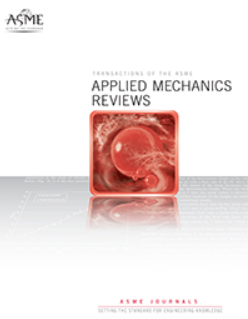具有共轭传热的内部沸腾流动的欧拉-欧拉多尺度模拟
IF 16.1
1区 工程技术
Q1 MECHANICS
引用次数: 0
摘要
采用数值方法研究了水平蛇形管内的沸腾流动。采用NEPTUNE_CFD双流体模型,研究了制冷剂R141b在绝热工况下的行为。该模型基于Navier-Stokes方程的Euler-Euler形式,其中在每个时间步长求解流体的两个阶段的控制方程。通过与sythes 4.3软件的耦合,考虑了管壁与流体之间的共轭传热,该软件在三维上解决了固体传导问题。我们进行了网格收敛研究,发现我们的案例需要每直径40个网格的分辨率。通过与文献的实验研究的比较,该方法得到了验证,该方法基于域内两相流型转变位置的忠实再现。使用原始的后处理,揭示流动特性。在达到统计收敛的情况下,分析了几个剖面的孔隙率、温度和流向速度的平均场和均方根场。由于流动动力学和可能存在的液滴,在饱和液体中达到了热平衡,但在气相中没有达到热平衡。最后,对结构进行了热分析。它证明了固体中的温度分布与流体领域中两相流状态之间的强耦合。本文章由计算机程序翻译,如有差异,请以英文原文为准。
Euler–Euler Multi-Scale Simulations of Internal Boiling Flow with Conjugated Heat Transfer
A numerical approach was implemented, to study a boiling flow in a horizontal serpentine tube. A NEPTUNE_CFD two-fluid model was used, to study the behavior of the refrigerant R141b in diabatic cases. The model was based on the Euler–Euler formalism of the Navier–Stokes equations, in which governing equations are solved for both phases of the fluid at each time step. The conjugate heat transfer—between the tube wall and the fluid—was considered via a coupling with the SYRTHES 4.3 software, which solves solid conduction in three dimensions. A mesh convergence study was carried out, which found that a resolution of 40 meshes per diameter was necessary for our case. The approach was validated by comparison with an experimental study of the literature, based on the faithful reproduction of the positions of two-phase flow regime transitions in the domain. Original post-processing was used, to unravel the flow characteristics. The mean and RMS fields of void fraction, temperatures and stream wise velocities in several sections were analyzed, when statistical convergence was reached. A thermal equilibrium was reached in the saturated liquid, but not in the vapor phase, due to the flow dynamic and possibly the presence of droplets. Finally, a thermal analysis of the configuration was proposed. It demonstrated the strong coupling between the temperature distribution in the solid, and the two-phase flow regimes at stake in the fluid domain.
求助全文
通过发布文献求助,成功后即可免费获取论文全文。
去求助
来源期刊
CiteScore
28.20
自引率
0.70%
发文量
13
审稿时长
>12 weeks
期刊介绍:
Applied Mechanics Reviews (AMR) is an international review journal that serves as a premier venue for dissemination of material across all subdisciplines of applied mechanics and engineering science, including fluid and solid mechanics, heat transfer, dynamics and vibration, and applications.AMR provides an archival repository for state-of-the-art and retrospective survey articles and reviews of research areas and curricular developments. The journal invites commentary on research and education policy in different countries. The journal also invites original tutorial and educational material in applied mechanics targeting non-specialist audiences, including undergraduate and K-12 students.

 求助内容:
求助内容: 应助结果提醒方式:
应助结果提醒方式:


